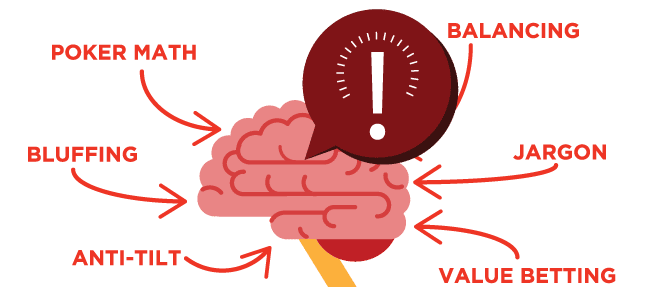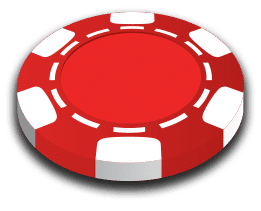I’ve been coaching poker for years. Over that time I’ve worked with hundreds of students, and I’ve seen a ton of changes. The game has changed, students have changed, and the needs of students have changed. But one of the biggest changes of late is a common leak among this current generation of poker students.
The leak is simple: students have tons of information in their head but struggle to utilize it in real-time. Like you, they’ve read countless books, watched countless poker strategy videos, and spent countless hours looking at hand histories. They’ve amassed a tremendous amount of poker knowledge from various authors and sources…but they can’t seem to apply it well at the tables.

Of course, this is an obvious issue. Knowing a lot is only part of the battle. Poker is a game of information and execution (with a dash of luck thrown in for flavor). Having lots of knowledge but no way to execute it well is just as useless as playing tons of volume without any study. Like everything in life, we need a balance. A balance between gathering information and applying it on the tables is crucial to long-term success.
You probably relate to this. You’ve studied poker, you’ve played poker, and, if you’re reading this…you care about improving your strategy. And in that study you’ve probably read pieces of advice that seem to conflict. One author may suggest checking to induce with top pair while another advocates value betting down to the river. Another author may suggest 4-betting AK almost always, while another may just fold or call AK when facing a 3bet. So which author is correct!?
With the information given, you couldn’t know which play is best! There was no discussion of who villain is, what stacks are, exact textures, dynamics, etc. But lesser students aren’t able to comprehend that yet. New students tend to look for absolutes. “When I have X hand I always make Y play.” As you grow as a student, you learn that the dialogue changes to “When I have X hand I will make Y play because of Z.” But the “because of Z” part can be tough to grasp, especially if the author didn’t fully explain their thought process in the first place.
This is the first part of fixing this leak. Understand the “why” behind every line. Ask yourself why you are making a certain play BEFORE making it. Ask yourself why a coach is suggesting a line if he didn’t explain it. Ask yourself if there are extraneous things an author is taking into consideration when he says “the best line to take is XYZ.” If you can’t answer the “why” question, ask the author and gain some clarity. Our coaches are available in the Red Chip Poker Forum and are very responsive to these kinds of questions.
That all being said, my students usually understand that. They know to ask “why” before making a play, and many know a bit more beyond that. For instance, I had a session the other day and we were reviewing a hand that went something like this:
50NL (6max) – 100BB effective
TAG opens to $1.5 from MP
HERO 3bets to $5 from the SB with AA
TAG calls $3.5
Flop: T♥ 7♥ 2♠
Hero bets $7, TAG calls $7
Turn: 5♦
Hero ???
At this point, in my usual fashion, I said “so, before you show me what happened…explain what you would do today and of course, why.” My student went into a spiral of thoughts and words, explaining what he would do against a fish, what he would do against a LAG, what he would do against a nit on a rainy day, and what his “sometimes” lines looked like. I was impressed with the knowledge, but when I asked “ok, but given the information you have here…what’s your play?”…he got very quiet.
This is a key example of the issue. He knew what to do in a bunch of situations, but couldn’t figure out what to do in this one. The real-time decision making ability was being slowed down due to all of these other memorized absolutes and variants. Whereas if he had just thought, “What kind of range does villain have? What kind of mistakes does villain make? And is villain good enough for me to need to worry about balance?” He could have come up with a solid line much quicker.
Especially when playing online, you need to be able to create +EV lines quickly. Knowing basic concepts like pot odds and position is good, knowing advanced concepts like hand reading and balancing is great…but if you can’t apply it then it’s wasted knowledge. While studying you shouldn’t just be jamming jargon and concepts in your head…you should also be building a framework so that you can quickly create a +EV play in real-time. If you practice this, poker becomes a whole lot simpler.

I personally practice this by going through hand histories. I study a hand and figure out what I’d do in this exact situation. Then I start asking myself, “When would I change my play? What parameter(s) would have to be true for me to take X line instead?” It’s the answers to these questions that help us create a quick and usable framework. Learning when we would change our line, based upon what parameters, and how to play a wider range of situations that could realistically arise on the tables. This type of work takes a lot of time, but it’s better than JUST mashing terms and hand ranges into your brain!
If you find yourself suffering from this leak, the leak of info-overload, it’s time to step back and reorganize your knowledge. Make sure you aren’t memorizing lines…rather that you understand a line is created based upon the answers of many “why” questions. Work on building a framework and a series of questions to ask yourself while analyzing a situation. I personally start with “What’s villain’s range here, and how does he tend to make mistakes?”…which gets me in the right direction more often than not. It’s overly-simplified at times, and won’t always get you the perfect answer, but it’s better than saying “OK, on page 108 of that one book, what did it say to do with a flush draw?”
As always, getting solid at poker takes work. Studying is part of the game, and studying the right stuff is vital. Remember, if you are studying hands and can’t answer something confidently…post the hand in the forums and we can work through it together. Or if you want more information about studying poker better, check out this podcast episode on the subject. Either way, best of luck with your exploration!


James,
great article (as usual)..I don’t know how you have enough time to do all you do,but keep up the good work!
Thanks Bocky! I don’t know how I have the time for it either, lol
So what was the line your student take? Is there a difference at how he would play it now?
He likely bet and would bet today…but the underlying rationale is more important than the actual line he took =)
took, that is.
this is an amazing article
Thanks Fausto =)
It’s a very good article as always. Concerning the text, I always like to have proof that the way I play is good. Therefore, I experiment(ed) a lot conciously taking the loss. My loss gets less and less knowing how not to play, now I even do good +EV play. For the reason to reduce loss and to play safely in terms of losing not too much, I just play 2ct/5ct full ring online and freerolls sometimes. To start to play poker being thight and getting looser with more true information and not just unproven thoughts is a good idea, I think.
I just wanted to share my mind.
Good bye
Thanks Knampf and nice work!
hi James
great article
i want to thank you for your vids on youtube and the vids here. because of that – i become from a loser/breakeven of 7 years of poker to a winner at my table
i had a smiiliar hand in barcelona casino (i was there only 2 time so i dont know the players)
played 1-3 with AK sut and possition
raises to 15. Bb called
flop: 2-6-10 rainbow
check from Bb
i raised 25
he calles
in that point i decided – i raise the turn or re-raise the turn. if he calls i check behind
the turn was J
he did checked
i raised 65
he calls
river – 6
he checked. i checked
he was A-10
shuld i shoved the river?
Yair
Thanks Yair! Would you mind posting that hand on the forum? It could spark a great discussion and I’d hate for it to get lost in the comments here =)